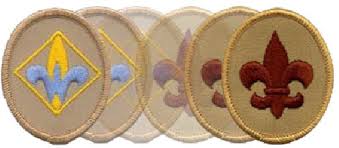2020 TO 2021 WEBELOS TRANSITION
As the weather turns cooler, Troops and Webelos should start thinking ‘Crossover’! Troops should be reaching out to their local packs to invite Webelos (4th AND 5th graders) to visit or join them for an activity.
Second-year Webelos leaders should be thinking about finishing up Arrow of Light requirements and start planning crossover ceremonies. Over the next few weeks, several communications will be going out to Webelos, Cub Leaders and Troop Leaders about the crossover process. If you have questions about Webelos transition, please email [email protected].
TRANSITIONING, TRANSFERRING, OR JUST JOINING – THINGS TO CONSIDER IN A BSA TROOP
Across our District, there a lot of great units. If you’re one of the thousands of 5th graders who will transition from Cub Scouts to Scouts BSA in the next few months your first priority should be finding a unit that’s right for you.
SOME THINGS TO CONSIDER WHEN JOINING A UNIT:
CALENDAR
Troop meetings. Sports’ seasons cause scouts to miss meetings all the time and it’s not a deal breaker. In fact the cross pollination effect sports has on scouting and scouting has on sports benefits both programs and the youth they serve. However if the troop regularly meets at a day and time of the week that conflicts with a religious or other enrichment program, a better fit should be sought.
Summer Camp. Studies show scouts who attend summer camp tend to stay in the program longer. If the troop attends summer camp during your annual family reunion or vacation, finding another unit that fits your family events better is recommended.
Annual program. A quality assurance program within scouting called Journey to Excellence (JTE) has among its requirements to have a full year of events planned and communicated by each fall. The best troops tend to include on their calendar scouting related events such as the University of Scouting, Order of the Arrow, Eagle Expo, Grey Wolf, Camporees and Wood Badge along with all their troop regular meeting and campout dates.
NUMBERS
Youth. An average size troop has approximately 36 active scouts. More scouts may be a sign of many happy scouts but for your scout it might not always mean better. Small, medium or large troops all provide different experiences for their scouts. It’s thought that members of smaller units get more opportunities to lead than units that have just a few positions for a lot of members. This is particularly true in the case of Grey Wolf training which is limited to 2 youth per offering regardless of unit size. Large and medium sized troops often have good event turnouts even when just a portion of the unit attends.
Adults. Three sayings come to mind. Many hands make light work. Too many cooks in the kitchen can spoil the broth. In small boats, everyone needs to padde. Find the right fit for you.
THREADS
Scouts. Rank is just one of the advancements scouts can earn and may not be the most important. A troop that’s right for your scout may be one that offers the core curriculum and special opportunity awards like the interpreter strips, conservation awards, adventure awards, NOVA and academic awards to name a few. For a fuller list of awards: https://www.scouting.org/programs/scouts-bsa/advancement-and-awards/
Adults. The adults can earn threads too. Patches above the front left pocket on an adult uniform are a sign of a leader who’s passed a background check, completed training and has varying degrees of tenure, met core position requirements as well as some stretch goals.
A couple other items to look for on adult uniforms are a Troop 1 neckerchief and or wood beads called woggles; both of which are displays of an elite leader training called Wood Badge.
On the front right pocket flap there might be a patch indicative of membership in scouting’s honor society called Order of the Arrow.
Even the iconic red wool jacket, if adorned with a bull, shark or loon are signs of an adult leader who’s experienced a famous high adventure – Philmont, Sea Base or Northern Tier.
Green uniforms at troop meetings are a sign the troop is affiliated with a Venture Crew – a program for youth 14 to 21. Venturing is scouting’s 3rd step and offers its members bigger adventures and more leadership opportunities.
FRIENDS
Youth. Having troop mates that are also in your school, church, extra curriculars, etc is a huge contributor to your scout’s success. If there is only one buddy your scout looks forward to seeing, it can make all the difference for your scout and that buddy.
Adults. Having adults that are also in your circles is a huge contributor to your scout’s success. You’re delivering your scout to meetings, asked to help meet the adult to scout ratio requirements, it only makes sense that if you have a buddy or four, you’re going to enjoy attending scout events. When adults are happy, youth are happy.
CULTURE
Flags. The opening flag ceremony can be a sign of what kind of troop it is. A color guard that is in-step and formal can be a sign the troop has a solid structure and expectations in place. A color guard that isn’t as formal or crisp might be a sign the troop is a little more informal.
Higher ranks. Does the troop have active Eagle scouts? Eagle scouts can continue in the unit earning Eagle Palms until they’re 18. When they do, the rest of the troop benefits from their continued involvement.
Is there a good Life and Star rank percentage to the rest of the Troop? For the younger scouts, there’s no better teacher than a peer just a little older than you.
Adult programming. Successful troops often take their adults into another area and discuss or even train them on various troop matters as part of their succession plan. Separating the adults helps the scouts stay focused on their meeting while providing valuable information to the adults.

